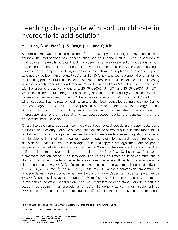摘要
Sodium chlorate was used as an oxidant for the chalcopyrite leaching in a hydrochloric acid solution. The hydrochloric acid concentration has an important effect on the dissolution of chalcopyrite. The results indicate that stirring speed has a negligible effect on copper dissolution, suggesting that the reaction is not controlled by liquid phase diffusion. Chalcopyrite leaching is also affected by temperature. X-ray diffraction studies show that sulphide is oxidised to sulphate at temperatures less than or equal to 65 degrees C, and at 85 degrees C, it is oxidised to elemental sulphur during the leaching process. Studies of the effect of temperature on dissolution indicate that the leaching process is highly dependent on temperature for the range of 25-65 degrees C. This result is consistent with the values for the activation energy at 25-45 degrees C (60.0 kJ mol(-1)) and 45-65 degrees C (57.7 kJ mol(-1)). Within these temperature ranges, the leaching process is controlled by a chemical reaction. However, at temperatures of 65-85 degrees C, the activation energy in (0-180 min) is 28.17 kJ mol(-1), which suggests that the reaction is diffusion and chemically controlled during this stage. During the last stage (180-300 min) of the process at 65-85 degrees C, the activation energy is only 0.55 kJ mol(-1). At this point, it appears that diffusion predominates. Scanning electron microscopy and energy dispersive X-ray spectroscopy results are consistent with the abovementioned kinetic data.
- 出版日期2012-4
- 单位昆明理工大学
